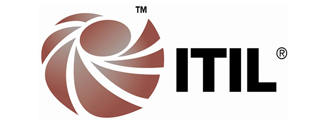Red Hat, Inc. is an American software company that is engaged in providing open-source software products to the enterprise community. Founded in 1993, Red Hat has its corporate headquarters in Raleigh, North Carolina with satellite offices worldwide.
Red Hat has become associated to a large extent with its enterprise operating system Red Hat Enterprise Linux and with the acquisition of open-source enterprise middleware vendor JBoss. Red Hat provides operating system platforms, middleware, applications, management products, and support, training, and consulting services.
Red Hat creates, maintains, and contributes to many free software projects and has also acquired several proprietary software packages and released their source code under mostly GNU GPL while holding copyright under single commercial entity and selling user subscriptions. As of April 2012, Red Hat is the largest corporate contributor to the Linux kernel
Infrastructure consolidation in these tough economic times makes pragmatic sense. But when done well, it’s also a strategic decision.
Red Hat infrastructure products cover a range of capabilities and enable customers to enjoy the benefits of open source solutions throughout the software stack including middleware, security, identity, and integrated applications.
Forms the central repository for an identity management infrastructure and is an LDAP-based server that centralizes application settings, user profiles, group data, policies, and access control information into an operating system-independent, network-based registry.
A scalable and manageable authentication system to ensure that only authorized users and applications have access to mission critical resources and data.
Red Hat Application Stack is the first fully integrated open source stack. Includes everything you need to run standards-based Web and enterprise applications.
A high performance, multi-system, POSIX compliant file system that is scalable to over 100 systems. Allows data to be organized and managed consistently across multiple systems.
Provides high availability and redundancy for applications and services. Specifically for application/service failover clustering and IP load balancing clustering.
Red Hat® Enterprise Virtualization is a complete virtualization management solution that lets you:

Performance and scalability. Get leading performance and scalability for real-world enterprise applications like Oracle, SAP, and Microsoft Exchange.
Security. Trust our industry-leading security built on the security-hardened Red Hat Enterprise Linux® kernel.
Enterprise features. Benefit from enterprise virtualization-management features, including live migration, high availability, load balancing, power saving, and more.
Agility. Achieve business agility and continuity by eliminating the dependencies between the desktop operating system and the underlying hardware.
Cost advantage. Through the power of Red Hat’s software subscription model, benefit from lower acquisition and total ownership costs for the same or better feature set when compared to other solutions.
Manage many servers as easily as 1. Red Hat® Network Satellite is an easy-to-use systems-management platform for your growing Linux® infrastructure.
Coupled with Red Hat’s Smart Management Add-On, Red Hat Network (RHN) Satellite provides powerful systems administration capabilities, like management, provisioning, and monitoring for large deployments.
RHN Satellite makes Linux deployable, scalable, manageable, and consistent. It gives administrators the tools to efficiently manage their systems, lowering per-system, deployment, and management costs.


Exatek is an IT Solutions Firm specialized in providing Professional Services and Integrated Solutions in the Oracle Technology, Oracle BI & EPM, and Red Hat Linux.
